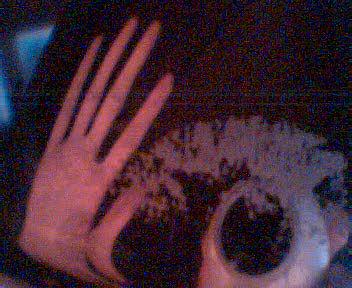Week 9
- Practical 1 - Audio Arts - Case Study [1]
The sampling rate of the sounds themselves were only 22050Hz, but as it was pointed out, this doesn’t make a lot of difference to the player because there are so many other things going on, they don't get a chance to concentrate specifically on the technical properties of the sounds. I guess as games become more advanced, so will audio engines, reproduction standards and consequently higher fidelity sound will become more important to the game play experience. I.e. extra frequency ranges and overall audio fidelity may become essential to the players’ survival. Although it's apparent to me that audio queues can make tell the player a lot about what is going on, the realism of the sounds aren't especially important. From my own experience, sounds serve as associations which hold meaning. The actual realism of the sound is not important, only its attached meaning. To illustrate this point, Christian showed us that a particular frog sound in Diablo II clearly sounded as though it was created from a Duck. However having played the game for hours on end myself, it never occurred to me that these frogs in fact sounded like ducks.
- Practical 2 - Creative Computing - HID [2]
- Music Technology Forum - Workshop - Improvisation with DJ Trip (Tyson Hopprich) [3]
I found it interesting when Tyson talked about listening to himself in 3rd person perspective, and from there adjusting his music dynamically depending on the audience vibe. I found Dragos’ piano style nostalgic. Albert’s wind derivative sounds worked very well. Matt’s piano was suitable and his use of ear was impressive. He did however stick to the mid to mid-high end of the piano, and avoided the higher and lower register extremes. For this sort of music, I think those extremes could have worked really well. It was difficult to pick was Adrian and Jake were doing so I refrain from talking about their contribution. I will have to say however that the drum beat in the 1st and maybe the last or second to last (not sure which one) persisted for at least half the performance too long. I realise it’s hard to break away from a beat when you’re the only person creating it, but some variation in the beat, silence, or a different beat altogether could have allowed for a more dynamic performance.
- References
- [1] Haines, Christian. 2006. Lecture on Game Audio. University of Adelaide, 12 September.
- [2] Haines, Christian. 2006. Lecture on SuperCollider. University of Adelaide, 14 September.
- [3] Sardeshmukh, Dr. Chandrakant. 2006. Presentation by Dr. Chandrakant Sardeshmukh. University of Adelaide, 14 September.


0 Comments:
Post a Comment
<< Home